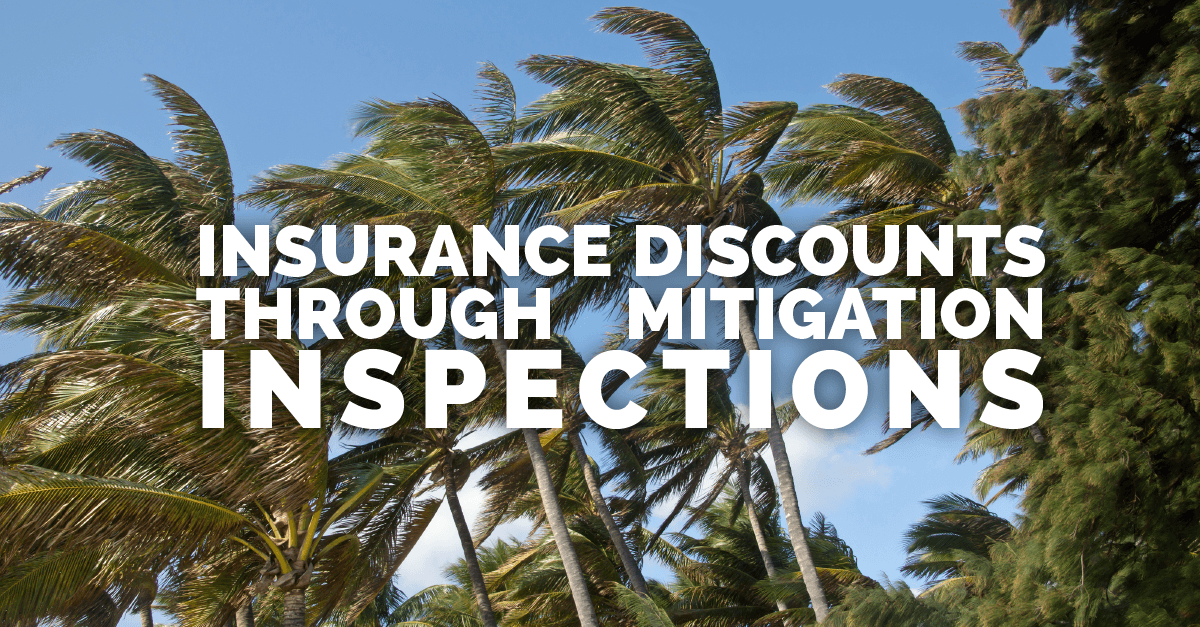Wind insurance coverage is a necessity for home and business owners throughout Florida. Because past hurricanes have inflicted billions of dollars in property damage, wind damage coverage can account for up to 70 percent of the total cost of annual insurance coverage. The State of Florida now requires that insurance companies offer discounts or credits to homeowners for wind damage-resistant features that have passed a certified wind mitigation inspections. These inspections certify that existing building features and home improvements are in place that will reduce property damage and loss due to future wind events.
By taking the proper precautions, homeowners can themselves save money and headaches down the road.
What Takes Place During a Wind Mitigation Inspection?
State-certified inspectors evaluate eight features that can reduce wind damage to your home including:
- Opening Protection — All the doors and windows must have hurricane-rated protection installed in order to qualify for a discount.
- Exterior Wall Construction — Homes with reinforced concrete block construction receive automatic discounts.
The inspection report also details five roof-related features and lists any repairs and improvements needed to qualify for discounts:
- Roof Shape — Hip roofs receive significantly less wind pressure than gable roofs and have a huge impact on wind damage insurance rates.
- Roof Covering — Not all roofing materials are created equal. An inspector verifies the age & quality of your roofing material to see whether it meets the 2001 Florida building code standards.
- Roof Decking Attachment — The type and thickness of the decking material, attachment method, and how much uplift it can withstand are evaluated. If nails or screws were used, their length and spacing are also considered.
- Roof to Wall Attachments — Where is the weakest point of connection? The inspector checks how the trusses are attached to the walls and assess strengths including hurricane straps, clips, and metal connector wraps.
- Gable End Bracing — If your home has a gable-style roof, the gable ends are inspected to see if they are properly reinforced to meet building code standards. Gable ends taller than 48 inches need to be braced to qualify for a discount.
- Secondary Water Barrier — Whether this is a self-adhering membrane or a foam adhesive SWR barrier, this extra layer of protection installed under your primary roofing material can save you money on your insurance. For either option, you’ll likely need written certification from your roofing contractor and photo documentation to receive a discount.
When choosing an inspector, look for one who will reinspect and update the report if you make repairs or improvements.
How Does an Inspection Translate Into Savings?
Once submitted to the insurance company, the form will be evaluated and any applicable discounts will be calculated based on its contents and factors like your home’s value and specific location. While actual savings can vary, the average state-wide discount is 30% of the wind coverage portion of annual homeowners’ premiums. Not only can you save money on your insurance, proper wind mitigation certification and inspection translates to added home value and peace of mind.
To see how you might save on Wind Mitigation Insurance check out the Wind Insurance Savings Calculator.
If you need a wind mitigation inspection or expert roof repairs & improvements to qualify for additional insurance discounts, contact us at Kelly Roofing.
